By Michael Hankel, Member of the Board of Management, ZF Friedrichshafen AG
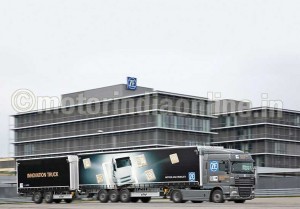 Commercial vehicles are facing increasingly complex requirements: From the fleet operator’s viewpoint – whether involved in freight haulage or passenger transport – commercial vehicles must primarily be economical and reliable. To manage increasing global transport requirements sustainably, commercial vehicles also need to use resources as economically as possible and fulfill ever more stringent exhaust emission standards worldwide. In addition, there is high cost pressure as well as the expectation that every new vehicle generation features optimized comfort and safety.
Commercial vehicles are facing increasingly complex requirements: From the fleet operator’s viewpoint – whether involved in freight haulage or passenger transport – commercial vehicles must primarily be economical and reliable. To manage increasing global transport requirements sustainably, commercial vehicles also need to use resources as economically as possible and fulfill ever more stringent exhaust emission standards worldwide. In addition, there is high cost pressure as well as the expectation that every new vehicle generation features optimized comfort and safety.
These trends open up huge opportunities, yet also present the commercial vehicle industry with enormous challenges and require innovations that address the issues raised by the market and the market environment. What is more, global competition leads to ever shorter innovation cycles, while the variety of models and features is growing constantly. The industry as a whole must cope with increasing product complexity and changes in the added value chain. How are manufacturers and suppliers responding to these challenges? Does this alter corporate and added value strategies?
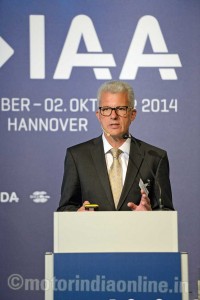
First of all, this situation leads to fundamental changes in technologies: Manufacturers turn to platform strategies in order to maximize synergy effects while reducing development effort and costs. Modular components and systems achieve comparable effects. Both these aspects increase the suppliers’ dependency on individual platforms. Simultaneously, OEMs are reducing their own dependency by multiple sourcing, especially when it comes to standard products. This is where economies of scale cut costs. What this means for suppliers is that they must deliver large quantities in high quality globally and from bases close to the customers. Furthermore, a general objective is to design products tailored even more precisely to specific market requirements, for instance, in terms of performance, service life or costs.
From the viewpoint of the OEMs, this leads to new added value strategies: The manufacturers concentrate on key components that represent unique selling propositions on the market and in comparison with competitors. When it comes to standard components, the key focus is on cost. To avoid dependencies, manufacturers source the same components from various suppliers.
For suppliers, this raises the question of whether to be cost leaders or technology leaders. Possible strategies might be to aim for cost leadership and sell standard components at the best prices, or to drive innovations as a technology leader and develop products that offer a significant competitive advantage. As a technology leader, the supplier acts as a specialist and partner of the manufacturers, shaping future technologies through continuous research and development and driving the further development of the whole industry.
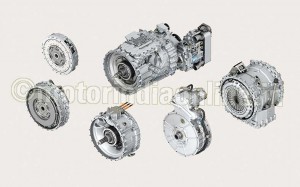 What does this mean for a global supplier company like ZF? First, our clear target is to secure technological leadership; so we develop and market innovative benchmark products that offer competitive advantages. At the same time, added value must also come from volume, i.e. products are supplied to several manufacturers, yet allow those manufacturers enough scope for differentiation. The latest example of innovation in commercial vehicle driveline technology is the modular, automatic transmission system TraXon.
What does this mean for a global supplier company like ZF? First, our clear target is to secure technological leadership; so we develop and market innovative benchmark products that offer competitive advantages. At the same time, added value must also come from volume, i.e. products are supplied to several manufacturers, yet allow those manufacturers enough scope for differentiation. The latest example of innovation in commercial vehicle driveline technology is the modular, automatic transmission system TraXon.
This addresses the current and future requirements of the commercial vehicle market for a versatile, flexible solution for a wide range of applications, and offers a dual clutch module and hybrid module for use in heavy trucks for the first time.
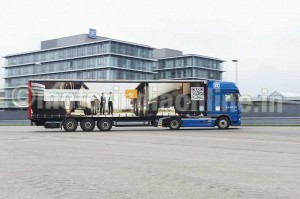 Second, added value must be achieved globally. Suppliers will only be successful if they produce locally, close to their customers. But local production is not everything. “Design to Market” is the key here: ZF offers mobility technologies in line with market requirements around the globe and combines these where necessary with engineering and industrialization know-how locally.
Second, added value must be achieved globally. Suppliers will only be successful if they produce locally, close to their customers. But local production is not everything. “Design to Market” is the key here: ZF offers mobility technologies in line with market requirements around the globe and combines these where necessary with engineering and industrialization know-how locally.
Designing basic products that can be adapted to specific regional requirements is another key to success. ZF is not only represented in all countries with its own locations, it also follows the “local for local” principle in materials management and engineering. Engineers at the ZF development locations are increasingly processing important product or application development packages locally, considering market-specific requirements in the process.
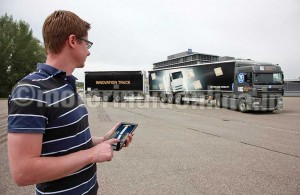 By driving further innovations and making them available globally, ZF will play a key role in ensuring that commercial vehicle technology worldwide meets market requirements and do so with cutting-edge driveline and chassis technology as well as tailor-made electronics, lightweight design concepts, and other innovations derived from intelligently networking systems.
By driving further innovations and making them available globally, ZF will play a key role in ensuring that commercial vehicle technology worldwide meets market requirements and do so with cutting-edge driveline and chassis technology as well as tailor-made electronics, lightweight design concepts, and other innovations derived from intelligently networking systems.